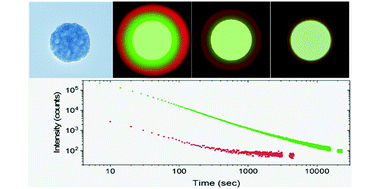Artículos SCI
2022
2022
Reactividad de Sólidos
Ageing-resistant zirconia/graphene-based nanostructures composites for use as biomaterials
Morales-Rodriguez, A; Gonzalez-Orellana, C; Perez-Garcia, AA; Lopez-Pernia, C; Munoz-Ferreiro, C; Poyato, R; Gallardo-Lopez, AJournal of the European Ceramic Society, 42 (2022) 1784-1795
Show abstract ▽
This work explores the incorporation of graphene-based two-dimensional nanostructures as moisture barriers to delay hydrothermal ageing of yttria-stabilized zirconia and strengthen its use in biomedical applications. Two sets of highly dense zirconia composites incorporating multilayered graphene with very different lateral dimensions, few layer graphene and exfoliated graphene nanoplatelets, were prepared. The effect of the addition of graphene nanostructures on zirconia ageing was investigated by conducting accelerated hydrothermal degradation experiments in an autoclave. An improved resistance to low-temperature degradation and a high tolerance to damage were achieved in the composites compared to those of monolithic zirconia. The incorporation of 1 vol% multilayered graphene was very effective in restricting the hydrothermal degradation. In particular, the composite incorporating exfoliated graphene nanosheets exhibited outstanding resistance to ageing because of their fine dispersion throughout the matrix, which effectively seemed to restrict grain growth and slow the propagation of the transformation front to the ceramic bulk.
Abril, 2022 | DOI: 10.1016/j.jeurceramsoc.2021.11.060
Materiales y Procesos Catalíticos de Interés Ambiental y Energético
H2 Photoproduction Efficiency: Implications of the Reaction Mechanism as a Function of the Methanol/Water Mixture
Barba-Nieto, I; Colon, G; Kubacka, A; Fernandez-Garcia, MCatalysts, 12 (2022) 402
Show abstract ▽
The influence of the reaction pathway of the sacrificial molecule oxidation to generate hydrogen is here investigated for lean and rich methanol reaction mixtures. Pt-TiO2 powders promoted or not with tin sulfide were used as catalysts. With the help of in situ infrared experiments under reaction conditions, methanol evolution was shown to take place by hole-related oxidation steps, with alkoxy and carbon-centered species as key radical species. The study analyzed quantitatively the fate and chemical use of the photons absorbed by the solids with the help of the quantum efficiency and the useful fraction of photons observables. Within this framework, the role of the sulfide component to promote photoactivity is interpreted, braiding chemical and photonic information.
Abril, 2022 | DOI: 10.3390/catal12040402
Materiales Ópticos Multifuncionales
Transparent Phosphor Thin Films Based on Rare-Earth-Doped Garnets: Building Blocks for Versatile Persistent Luminescence Materials
Castaing, V; Lozano, G; Míguez, HAdvanced Photonics Research, 3 (2022) 2100367
Show abstract ▽
Afterglow properties of persistent phosphors are attracting a great deal of attention in the fields of bioimaging, sensing, labeling, safety, or security. Complex garnet oxides, especially those doped with Ce3+ and Cr3+, are particularly relevant to this end since their persistent luminescence can be tuned through matrix composition and activated by visible light, in contrast to the vast majority of persistent phosphors that require UV excitation. Most extended preparation routes yield micrometer-sized phosphors that display strong light scattering, which limits their versatility and applicability. Herein, nanostructured garnet oxide-based thin films that are transparent and feature persistent luminescence properties are demonstrated. Following a sol–gel route and after high temperature annealing, few hundred nanometre-thick Y3Al2Ga3O12:Ce3+,Cr3+ transparent films showing efficient green emission and afterglow are attained. Gd3Al2Ga3O12:Ce3+,Cr3+ transparent thin films displaying yellow afterglow with distinct persistent kinetics are demonstrated, to prove the generality of the approach herein proposed. Its versatility is further demonstrated by developing layered phosphors with time-dependent chromaticity due to the unique persistent emission color – upon blue light excitation – and kinetics of each layer forming the stack. The results pave an avenue toward nanodevices and multifunctional coatings in which afterglow offers hitherto unexplored properties.
Abril, 2022 | DOI: 10.1002/adpr.202100367
Nanotecnología en Superficies y Plasma
QUEELS: Software to calculate the energy loss processes in TEELS, REELS, XPS and AES including effects of the core hole
Tougaard, S; Pauly, N; Yubero, FSurface and Interface Analysis, 54 (2022) 820-833
Show abstract ▽
We present the user-friendly and freely available software package QUEELS (QUantitative analysis of Electron Energy Losses at Surfaces) that allows to calculate effective inelastic scattering cross sections within the dielectric response description, for swift electrons travelling nearby surfaces in several environments. We briefly describe the underlying theoretical models and illustrate its use to evaluate the distribution of energy losses taking place in electron spectroscopies like transmission electron energy loss spectroscopy (TEELS), X-ray photoelectron spectroscopy (XPS), Auger electron spectroscopy (AES) and reflection electron energy loss spectroscopy (REELS), which are widely used for material analysis. This includes the intrinsic excitations due to the core hole in XPS and AES.
Abril, 2022 | DOI: 10.1002/sia.7095
Reactividad de Sólidos
Highly uniform Y3Al2Ga3O12-based nanophosphors for persistent luminescence bioimaging in the visible and NIR regions
Arroyo, E; Herrero, BT; De la Fuente, JM; Ocaña, M; Becerro, AIInorganic Chemistry Frontiers, 9 (2022) 2454-2461
Show abstract ▽

In the last few years, persistent phosphors with a garnet crystal structure have attracted a great deal of interest for a plethora of applications ranging from bioimaging to anti-counterfeiting technologies. However, the development of synthesis methods to fabricate uniform garnet-based micro and nanoparticles, that are needed for such applications, is not mature at all. This study reports the synthesis of highly uniform yttrium aluminum gallium garnet nanospheres. The method is based on homogeneous precipitation in a polyol medium followed by silica coating and calcination. The nanoparticles resulting after silica removal were also uniform and were easily functionalized with polyacrylic acid. The colloidal stability of the latter in physiological media and their biocompatibility were analyzed. The luminescence of the particles, doped with Ce3+, Cr3+, and Nd3+, was studied by recording emission and excitation spectra and persistent luminescence decay curves. Due to their uniform morphology, high colloidal stability, absence of toxicity, and persistent emission in the visible and near-infrared regions, the reported nanospheres show great potential as persistent luminescent bioimaging probes. In addition, the synthesis method paves the way for future use of this persistent material in other applications that require the phosphor to be in the form of highly uniform nanoparticles.
Abril, 2022 | DOI: 10.1039/d2qi00480a
- ‹ anterior
- 53 of 410
- siguiente ›














